
table of contents
- Bee friendly trees
- Flowering time February / March
- Flowering time May / June
- Flowering period July to September
- Hedges and bushes for bees
- Flowering time February / March
- Flowering time April / May
- Flowering time May / June
- Flowering period July to September
- frequently asked Questions
Bee-friendly woody plants are indispensable in every garden - this is the only way for honey and wild bees to find sufficient food. So that you can find suitable flowering trees and shrubs rich in nectar and pollen, we have listed the 65 best species here.
In a nutshell
- Choose trees with different flowering times to ensure long-term food supply
- Species with flowering times in early spring and from July in particular are in great demand
- only choose varieties with single, unfilled flowers; double flowers are unsuitable
- Colorfully mixed hedges and flowering bushes in the garden ensure the supply of bees
- many types of wood are also suitable for bumblebees, butterflies and beetles
Bee friendly trees
Not only flowers and flowering shrubs are essential for the survival of the various types of bees, numerous woody plants are also inconceivable without these insects. Not only do flowering trees provide plenty of nectar and pollen, the plants are also dependent on cross-pollination - without honey bees there would be no apples, hazelnuts or other fruit. So that the insects can find enough food all year round, we have sorted the best bee trees here according to their flowering times.
Flowering time February / March
Tree hazel (Corylus colurna)
- slow growing
- tolerates heat and drought
- up to 20 meters high
- Flowers very early between February and March
- edible fruits

Mountain cherry (Prunus sargentii)
- tree-like ornamental cherry
- lush flowers from mid-March
- splendid autumn colors.
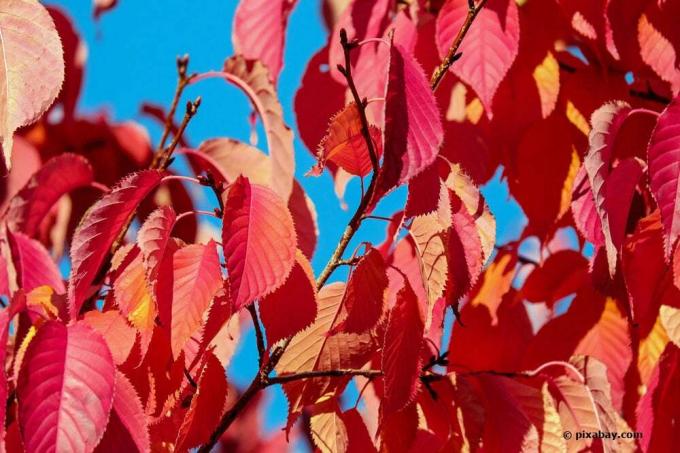
Blood plum (Prunus cerasifera)
- beautiful red-brown foliage
- tolerate almost any soil
- for a sunny to partially shaded location
- early flowering period
- approached by numerous bees, wild bees and bumblebees
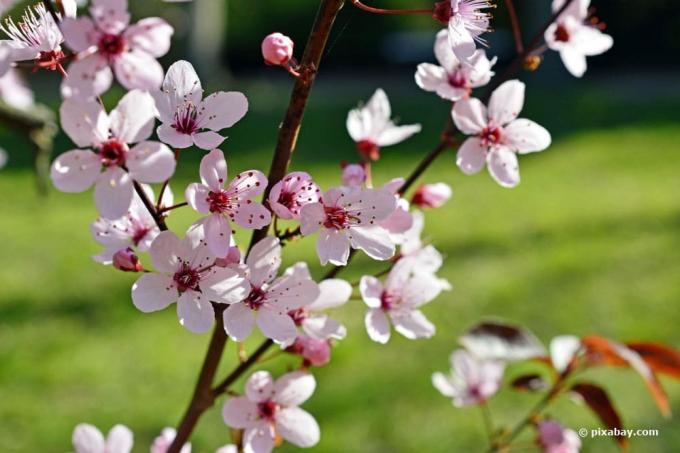
Ash maple (acer negundo)
- Flowering early from the end of March
- dioecious
- only male specimens are suitable as a bee pasture

Red maple (Acer rubrum)
- up to 15 meters high
- like all maples an important bee pasture
- Flowering begins early in March
- Mainly male specimens of honey and wild bees visited
- Prefer male varieties like 'Summer Red', 'Somerset' and 'Brandywine'
- for a sunny to partially shaded location with nutrient-rich and moist soil

Narrow-leaved ash (Fraxinus angustifolia)
- very suitable for a hot and dry location
- Bees and bumblebees fly to the flower
- Art is an excellent supplier of pollen
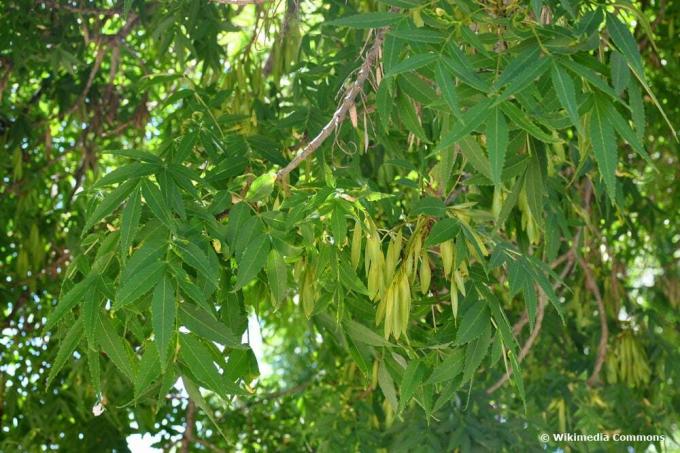
White willow (Salix alba)
- also known as pollinated willow
- Willow trees are indispensable as bee pastures in spring
- yellow catkins appear from the beginning of April
- chalk-loving
- for a sunny to partially shaded location with the most moist soil possible
- also tolerates drought
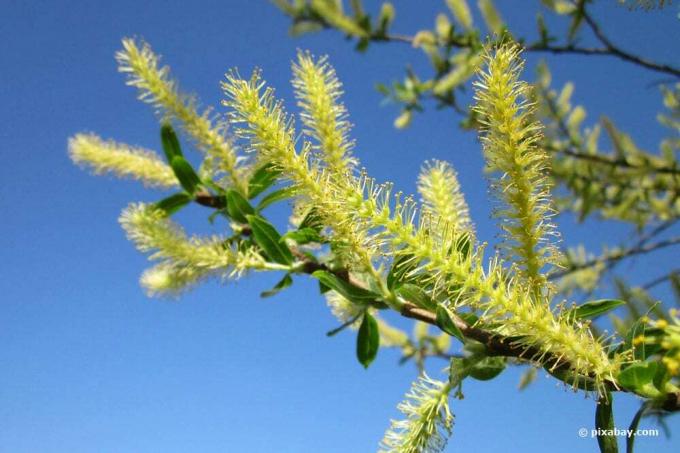
Norway maple (Acer platanoides)
- very bee-friendly species
- should not be missing, especially in an urban environment
- flowers between April and May
- often approached and easily accessible source of nectar
- small, yellow-green flowers always appear in front of the leaves
- For example, the 'Globosa' variety is well suited for small gardens
- also known as ball maple

Trembling poplar (Populus tremula)
- valuable bee nourishment wood
- For example, the 'Erecta' variety is well suited for the garden
- can be grown as a large shrub or a small, narrow tree
- this variety blooms earlier than other poplars
Flowering time April / May

Apricot (Prunus armeniaca)
- valuable bee tree (like all fruit trees)
- but is also popular with bumblebees
- especially the 'Kyoto' variety blooms very early and profusely
- for a warm and sunny location

Pear (pyrus communis)
- very good pollen and nectar dispensers
- frequented by both bees and bumblebees
- Pears bloom around the same time as apple trees

Cultivated apple (Malus domestica)
- one of the best nectar and pollen dispensers ever
- Extension of the flowering period through a clever choice of varieties
- combine summer, autumn and winter apples with different flowering times

Tip: Ornamental apples are also very bee-friendly trees that - depending on the type and variety - even fit in small gardens. Particularly recommended are, for example, the very early blooming multi-flowered apple (Malus floribunda) or the three-lobed ornamental apple (Malus trilobata).
Peach (Prunus persica)
- Flowering time just before the cherries
- very good pollen donors
- for a warm and sunny place

Plum (Prunus domestica)
- many varieties: plums, plums, mirabelle plums, reenclods
- Bumblebee and bee pasture was a popular choice for flowers
- Plums bloom a little later than cherries
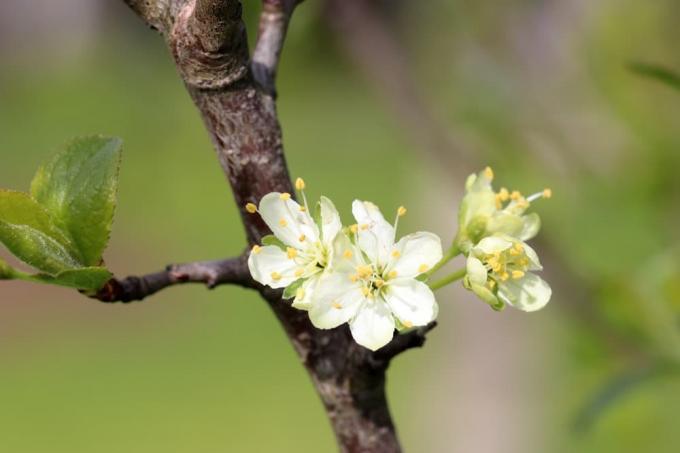
Sour cherry (Prunus cerasus)
- excellent bee pasture
- blooms shortly after the sweet cherry
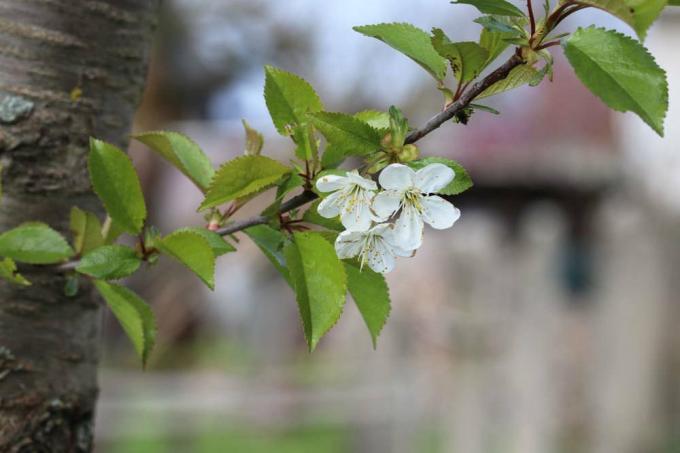
Sweet cherry (Prunus avium)
- open from the beginning of April the blossoms at the fruit trees
- very bee-friendly wood
- excellent nectar and pollen supplier
- grow up to 20 meters high
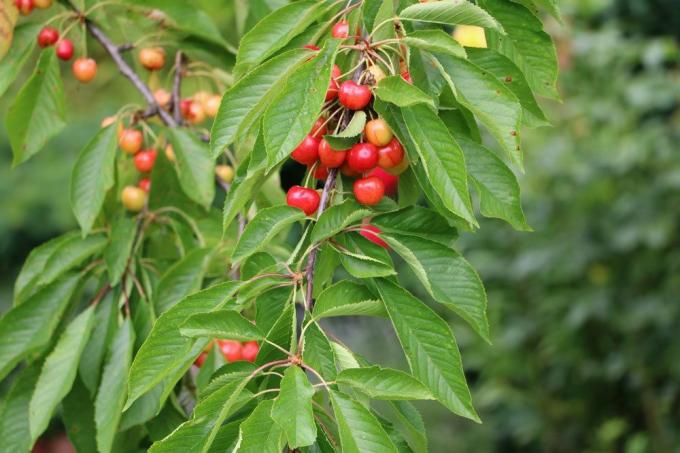
Tip: All ornamental cherries are also very good bee pastures, whereby you should always prefer the unfilled varieties to the half or filled ones. Only these can be used by bees, wild bees and bumblebees, since filled cultivated forms are useless as pollen and nectar donors.
Sweet almond (Prunus dulcis)
- for warm space in the garden
- also other almond trees suitable as bee pasture, z. B. Palatinate fruit almond (Prunus amygdalus)
- self-fruiting cultivated form of the sweet almond
- Almond trees are covered with innumerable pink flowers

Bird cherry (Prunus padus)
- native rose family
- Flowering time between May and June
- frequented by bees and bumblebees
- black, berry-like fruits in July and August

Quince (Cydonia oblonga)
- bloom from mid-April
- mostly together with the late apple varieties
- Differentiation between apple and pear quince
- Depending on the variety, tree can also be grown as a shrub
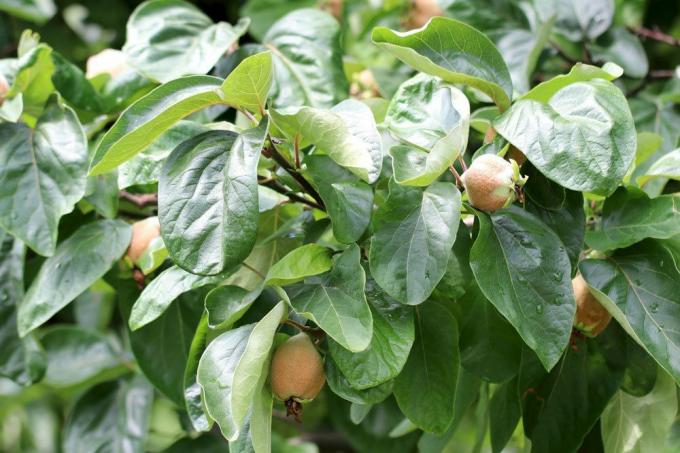
Field maple (Acer campestre)
- native, robust deciduous wood
- blooms together with apple trees
- valuable bee pasture
- Species well tolerated by pruning, very suitable for tall hedges
- offers birds both nesting sites and protection
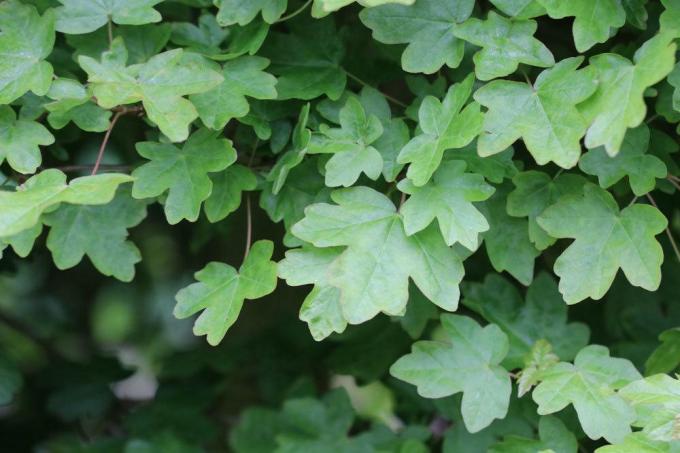
Tip: In addition to the Norway maple and the field maple, other types of maple are also important bee pastures in spring. The sycamore maple (Acer pseudoplatanus) or the late-blooming fire maple (Acer tataricum ssp. ginnala) as good pollen donors.
Yellow-flowering horse chestnut (Aesculus flava)
- heavily flown over by bees and bumblebees
- special type for large gardens
- also known as Appalachian horse chestnut or yellow pavie
- flowers according to the better known red-flowered variety
- up to 30 meters high
- develops dense, broadly conical crown
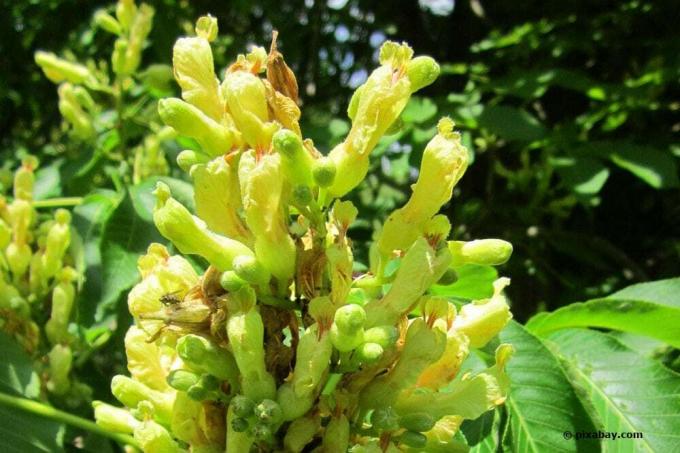
Red-flowering horse chestnut (Aesculus x carnea)
- blooms about one to two weeks later than the common horse chestnut
- especially attracts bumblebees
- less endangered by leaf miners

Horse chestnut (Aesculus hippocastanum)
- very important pollen donor for bees and bumblebees
- Flowers both male and female

Tupelo tree (Nyssa sylvatica)
The forest tupelo tree, which is particularly bee-friendly, does not bloom until it is between 15 and 20 years old. Originally from North America, the tree grows up to 20 meters high, provides valuable nectar and is just as important for other insects and birds. However, tupelo trees have very specific location requirements, they need them
- an acidic and moist soil
- pH between 5.5 and 6.5 is ideal
- nutritious
- sunny to partially shaded location
In the course of climate change, the tupelo tree is a good alternative to other, more sensitive species.
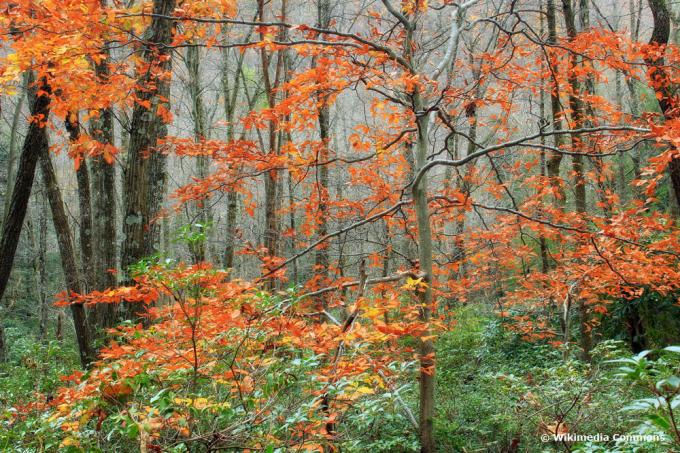
Flowering time May / June
American yellowwood (Cladrastis lutea)
- rarely planted
- short-stemmed tree
- develops long, white panicle flowers shortly before the summer lime tree
- Flowers are often flown to

Bluebell tree (Paulownia tomentosa)
- Bluebell trees are common in the United States
- Varietal honeys from the blue-violet panicle flowers are popular there
- tolerates drought very well
- is considered to be fast-growing.
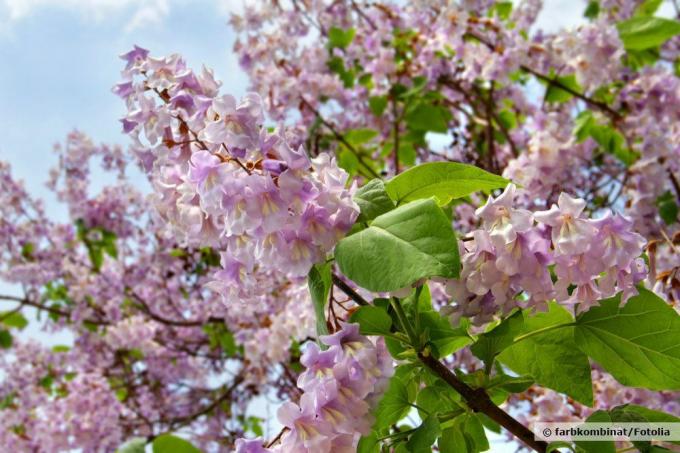
Mountain ash (Sorbus aucuparia)
- native wild wood
- offers plenty of food for a wide range of insects as well as birds
- white panicle flowers attract many insects
- offer a pretty sight in the months of May and April
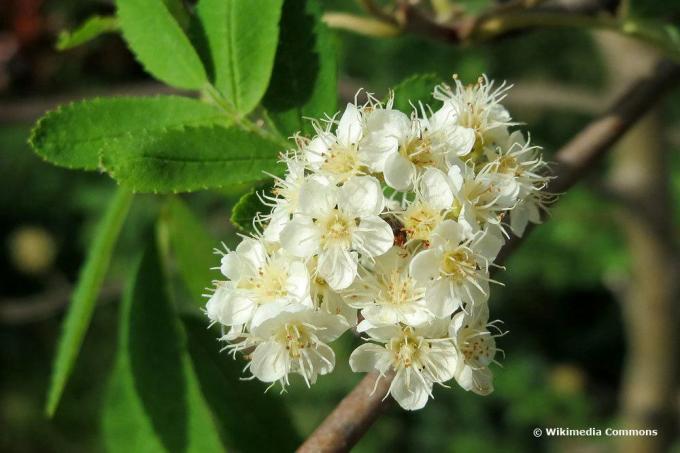
Service tree (Sorbus torminalis)
- bee-friendly wood for the garden
- native style
- chalk-loving
- rarely planted

Common whitebeam (Sorbus aria)
- various types of Sorbus are considered to be particularly friendly to bees
- so also common whitebeam and its relative, the Swedish whitebeam (Sorbus x intermedia)
- the latter is a hybrid of the rowan and the whitebeam

Robinia / false acacia (Robinia pseudoacacia)
- Acacia honey is a delicious delicacy made from locust blossom
- is enjoying growing popularity with us
- feels particularly comfortable on dry locations
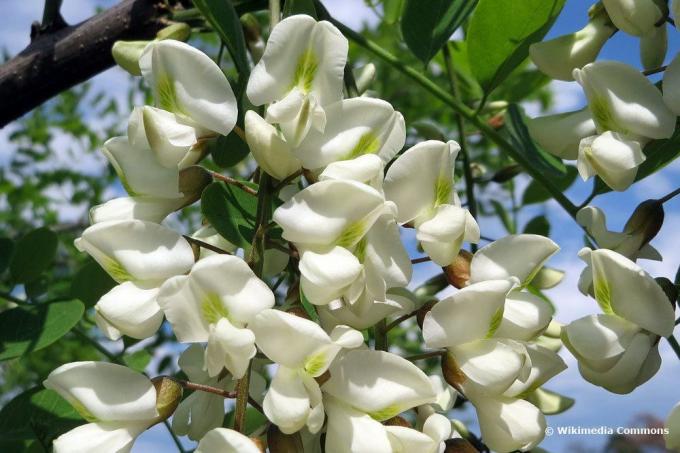
Service tree (Sorbus domestica)
- highest nectar content of all Sorbus species
- native species
- up to ten meters high
- also supplies apple- or pear-shaped, edible fruits
- Fruit varieties such as the 'Sossenheimer Giant' are particularly productive
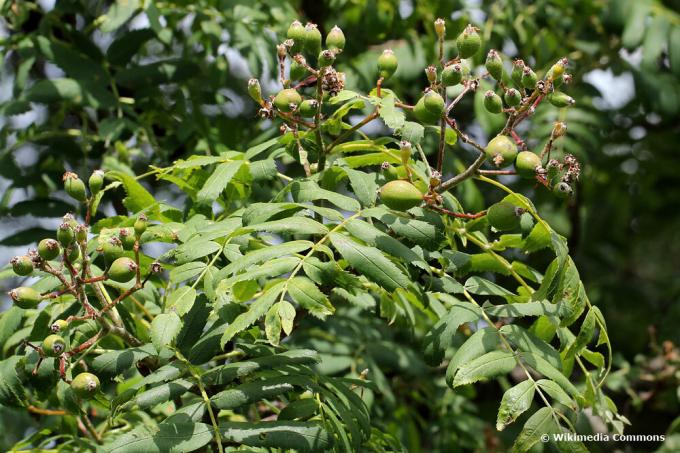
Flowering period July to September
Bees tree / stinky ash (Tetradium daniellii)
- also known as the thousand-flower bush
- develops very profuse flowering
- numerous large, greenish-white panicles of umbrella
- extremely bee-friendly wood
- liked to be approached by many other insects
- also provides food and shelter for birds.
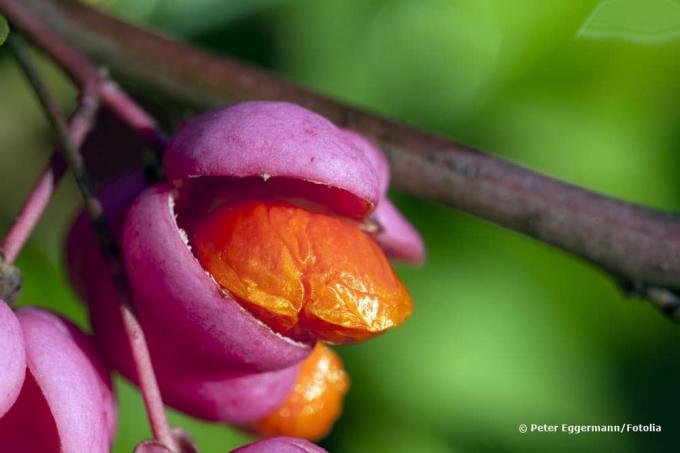
Sweet chestnut (Castanea sativa)
- excellent late bee pasture
- Blossom appears after that of the winter linden tree

Linden (Tilia)
- most important bumblebee and bee pastures at all
- they bloom very profusely and with nectar-rich flowers
- different species that bloom at different times
- Overall, the linden blossom takes about six weeks
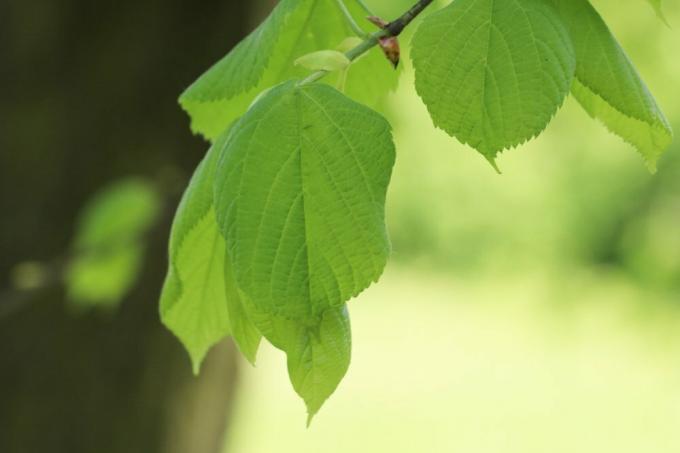
Tip: There are no species of linden that are poisonous to bees or bumblebees, as was claimed until a few years ago. The dead bumblebees found mainly under silver linden trees are instead due to the general lack of food at the time of flowering.
Olive willow (Elaeagnus angustifolia)
- gray-leaved shrub trees
- bloom together with the summer linden tree
- show slightly fragrant flowers
- small, yellow flowers
- is often flown heavily
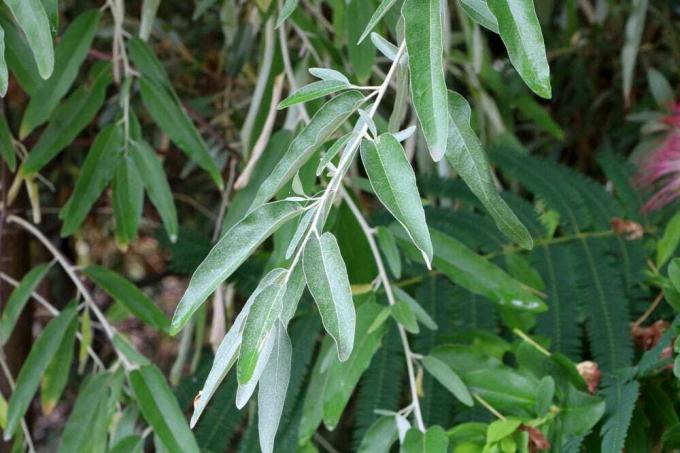
Tulip tree (Liriodendron tulipifera)
- Deciduous tree native to the USA
- We have also been planting them more and more for a number of years
- blooms shortly before the summer linden tree
- valuable bee food trees
- also frequented by bumblebees

Hedges and bushes for bees
A whole tree does not fit into every garden; instead, numerous bush-like trees are also suitable as food for bees. Here, too, we have listed suitable shrubs according to their flowering time, as you can plan and plant a varied bee pasture that will bloom throughout the vegetation period.
Flowering time February / March
Blood currant (Ribes sanguineum)
- all Ribes species, such as the golden currant (Ribes aureum), are bee-friendly trees that are flown over heavily
- also very popular with wild bees and bumblebees
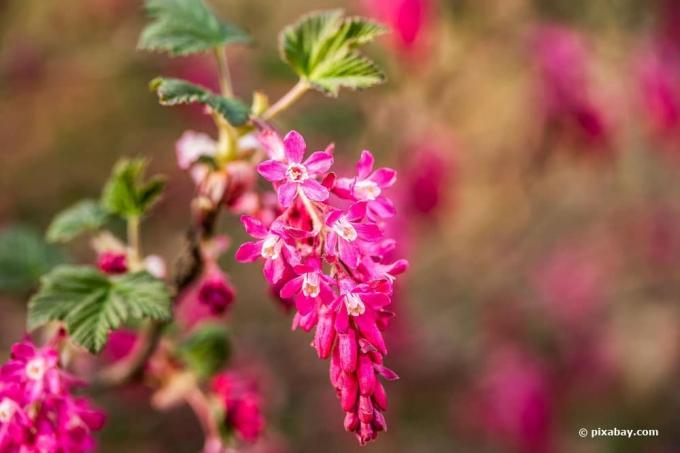
Hazelnut (Corylus avellana)
- very bee-friendly trees
- deliver nectar, but plenty of pollen
- are mainly approached by honey bees
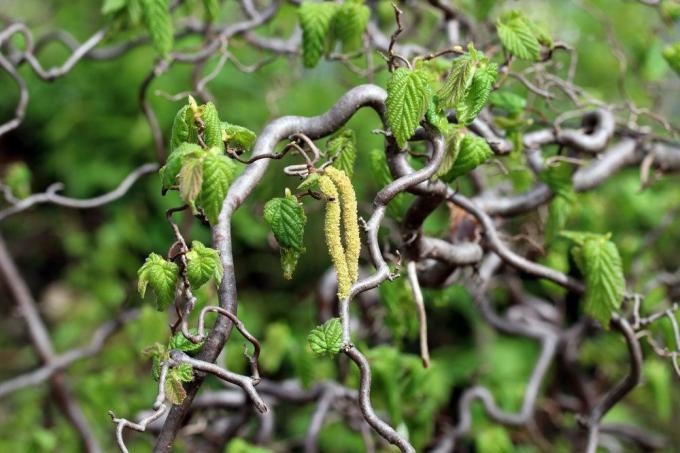
Cornelian cherry (Cornus mas)
- Large shrub or small tree
- bloom very early
- valuable pollen suppliers for sand and honey bees

Sal willow (Salix caprea)
- As in all willows, it is a valuable nutrient for bees
- In addition to pollen, flower catkins provide a lot of nectar
- Bumblebees and butterflies can also be found at this food source

Mock hazel (Corylopsis pauciflora)
- magical attraction for various insect species, especially on sunny days
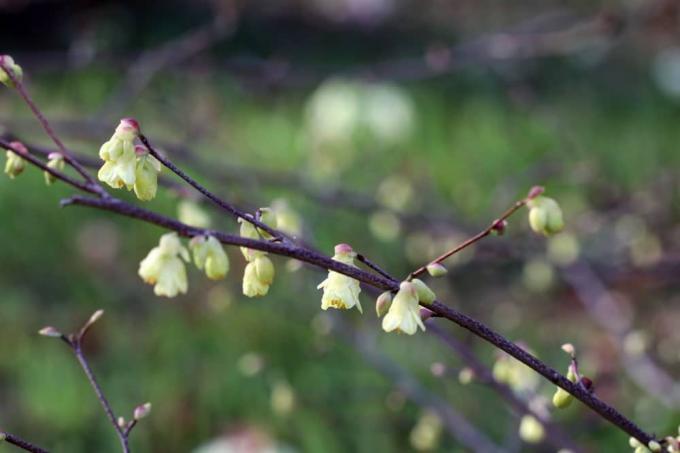
Sloe (Prunus spinosa)
- belongs to the Prunus species
- native, widespread shrub
- important bee pasture
- Mainly used by wild bees, bumblebees and butterflies

Winter jasmine (Jasminum nudiflorum)
- flowers very early in the year
- important source of food for wild, honey and wood bees as well as for bumblebees
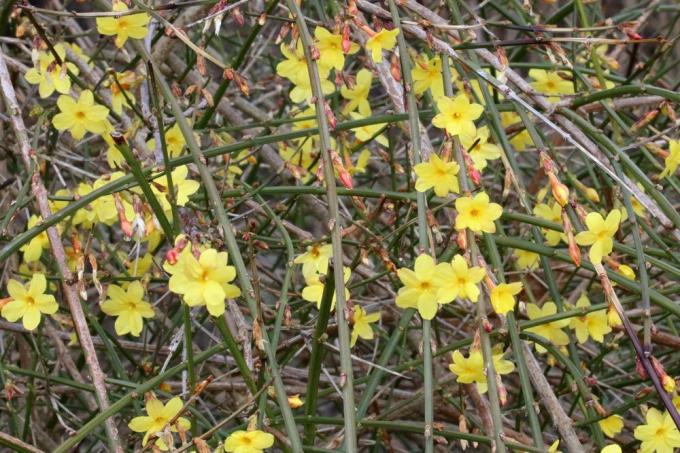
Flowering time April / May
Boxwood (Buxus sempervirens)
- For centuries it has been very popular as a hedge and topiary
- inconspicuous flowers provide honey and wild bees with valuable nourishment

Rock pear (Amelanchier lamarckii)
- native species
- valuable insect and bird nutrient wood
- even provides edible fruit in autumn
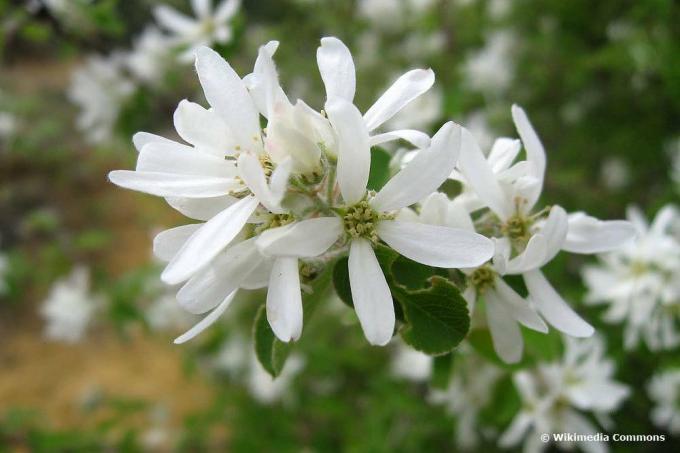
Evergreen barberry (Berberis julianae)
- evergreen variety of barberry
- blooms very early
- is flown heavily
- is well tolerated by drought

Evergreen viburnum (Viburnum x burkwoodii)
- like all snowball trees, bee-friendly
- is also popular with bumblebees
- the common viburnum, which blooms a little later, is also a sought-after tree for bees

Oregon grape (Mahonia aquifolium)
- evergreen shrubs
- profuse, yellow flowers
- Very well flown by honey bees, wild bees and bumblebees
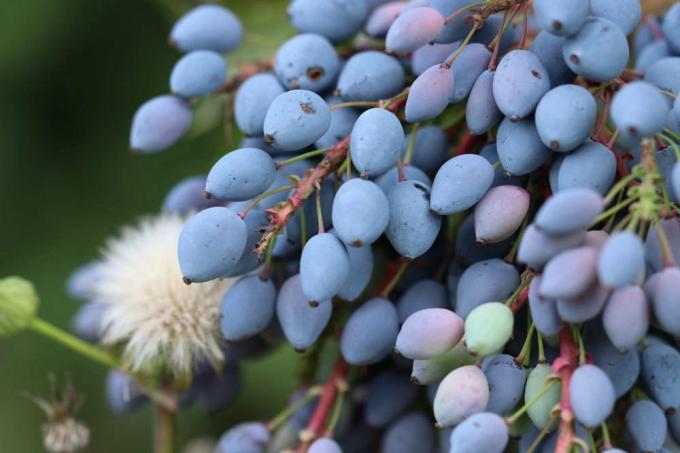
Ranunculus (Kerria japonica)
- popular ornamental shrubs in the garden
- If possible, choose varieties with unfilled flowers, as only these are flown to
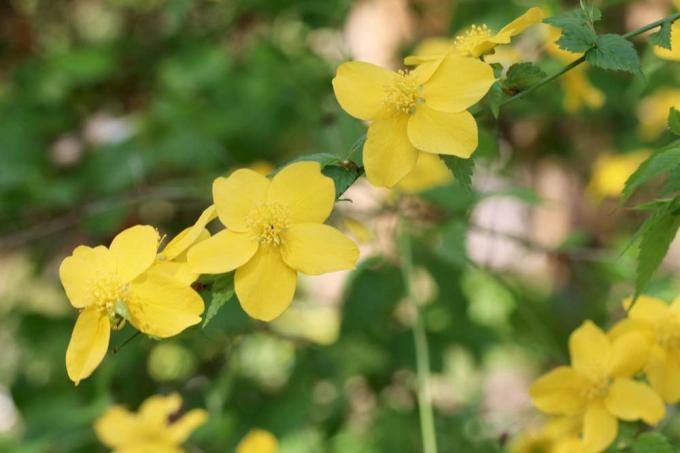
Quince Quince (Chaenomeles japonica)
- belongs to the rose family
- blooms profusely with red, pink, orange or white flowers
- shows yellow, hard fruits in autumn
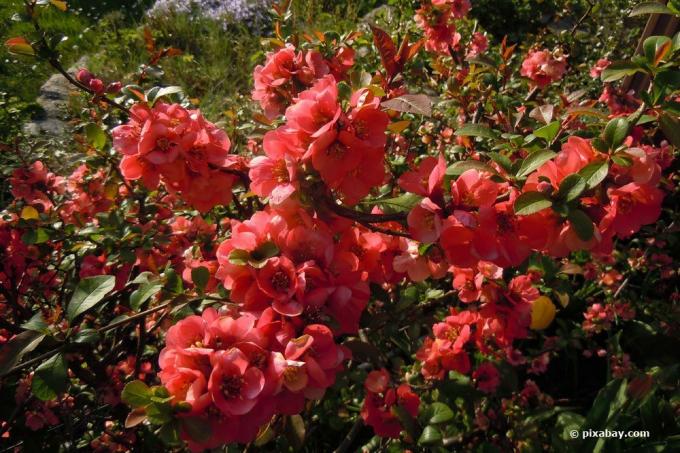
Willow-leaved pear (Pyrus salicifolia)
- gray-leaved shrubs
- bloom very much like pears
- bees and bumblebees are just as popular as these

Flowering time May / June
Firethorn (Pyracantha coccinea)
- attractive ornamental wood
- very well tolerated by heat
- frequented by numerous insects - in addition to honey bees, wild bees and bumblebees
- large selection of different cultivars for the garden
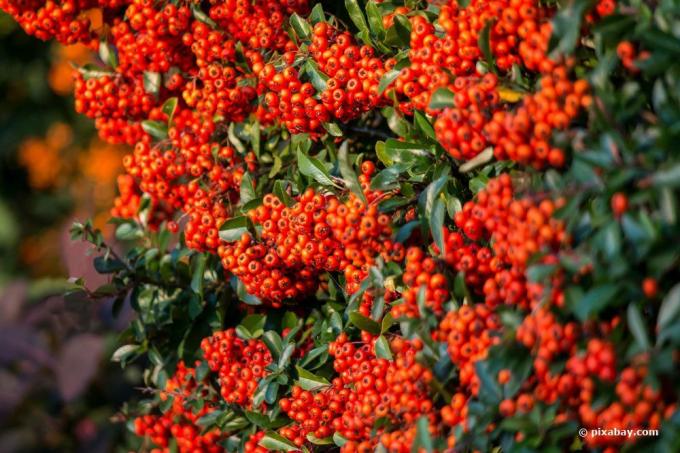
Mother of pearl bush (Kolkwitzia amabilis)
- also known as Kolkwitzia
- beautiful ornamental shrub for the garden
- Flowers like to be visited by bees

Wig bush (cotinus coggygria)
- Flowers rather inconspicuous
- but all the more popular with many insects
- Due to their broad, bushy habit, shrubs are very suitable for hedges
- Red-leaved varieties such as 'Lilia' or 'Royal Purple' are particularly attractive

Pipebush / Farmer's Jasmine (Philadelphus coronarius)
- strong-growing wood
- Flowers are simple, but not only smell heavenly for bees and bumblebees
- blooms before the summer linden tree
- also known as farmer's jasmine

Red dogwood (Cornus sanguinea)
- native species
- owes its name to the wood, which is colored bright red in winter
- Bee-friendly flowers attract numerous other insects - bumblebees, beetles and butterflies
- In addition, fruits (which are unfortunately poisonous for humans) are an important source of food for birds
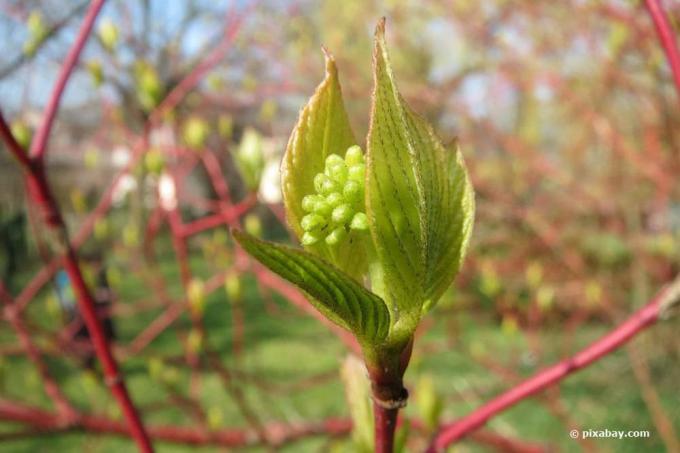
Weigela (Weigela)
- bloom between late May and mid-June
- numerous varieties with different growth behavior
- are very suitable for low or even higher hedges
- attractive, usually purple-red calyxes
- frequented by honey bees and bumblebees
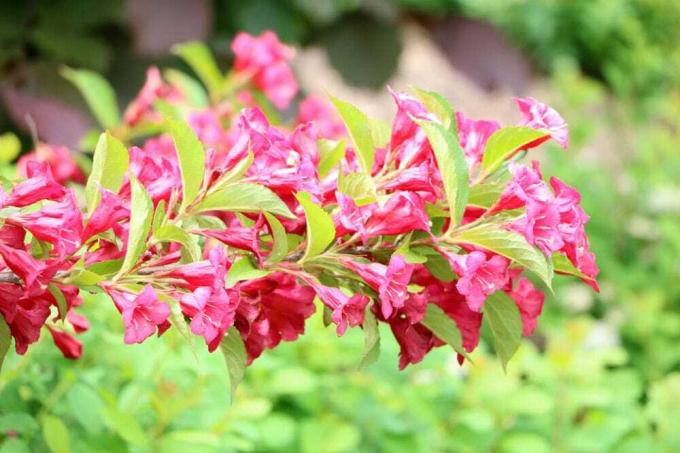
Hawthorn (Crataegus laevigata)
- The flowering of the domestic hawthorn is very important for many insects
- lies between the fruit and linden blossom
- In addition to honey and wild bees, bumblebees, beetles and butterflies also fly to the bush

Flowering period July to September
Finger shrub (Potentilla fruticosa)
- grows stocky and usually remains low
- scores with a very long flowering period between May and October
- golden yellow flowers
- is eagerly sought out by honey bees, wild bees and bumblebees
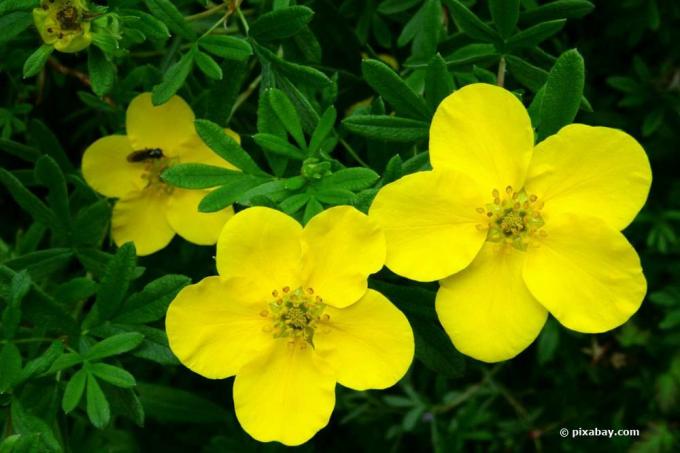
Hibiscus syriacus
- warmth-loving
- popular bee food tree
- large, attractive flowers in a wide variety of colors
- Small shrub can grow up to two meters high

Common privet (Ligustrum vulgare)
- easy to care for and easy to cut
- especially popular for hedges
- ecologically extremely valuable
- evergreen
- blooms for a long time between June and July
- In addition to various types of bees, it also feeds bumblebees, butterflies and beetles.
- The gold privet (Ligustrum ovalifolium 'Aureum') with its flower panicles up to ten centimeters long is also popular
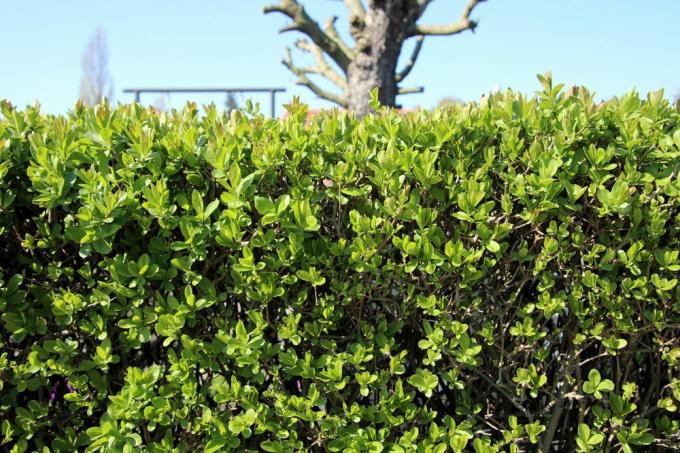
Love pearl bush (Callicarpa bodinieri)
- also known as beautiful fruit
- Flowers long and profuse in July and August
- Valuable food source for many types of bees, for bumblebees and birds (because they are decorated with fruit in autumn).
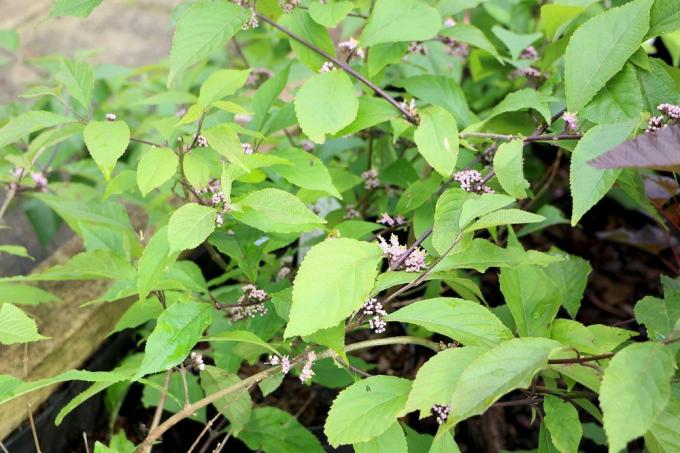
Snowberry (Symphoricarpus albus)
- Colloquially also known as crackling pea
- convinces with its long, bee-friendly flowering time between June and September
- prefers a sunny to partially shaded location
- however, it is rather undemanding in terms of the soil
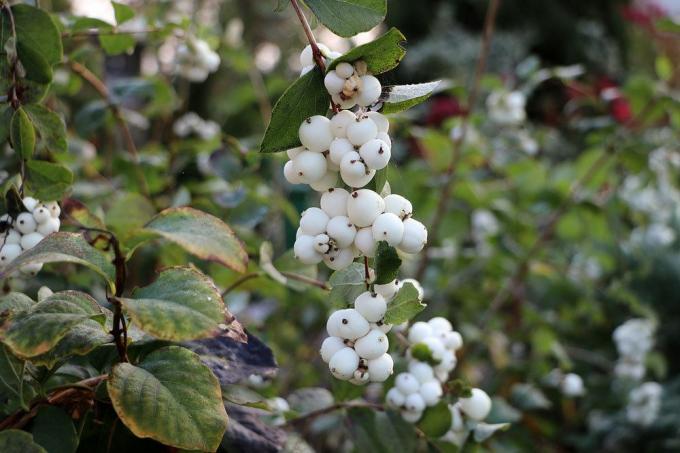
Seven Sons of Heaven (Heptacodium miconioides)
- large shrub
- late flowering between August and September
- real bee magnet
- however, it is also frequently flown over by other insects and butterflies

Buddleia / Butterfly bush (Buddleia alternifolia and Buddleia davidii)
- It bears its name for a reason, because its large panicle flowers attract numerous insects
- in addition to butterflies, bumblebees and various types of bees
- very bee-friendly and therefore indispensable species in the garden
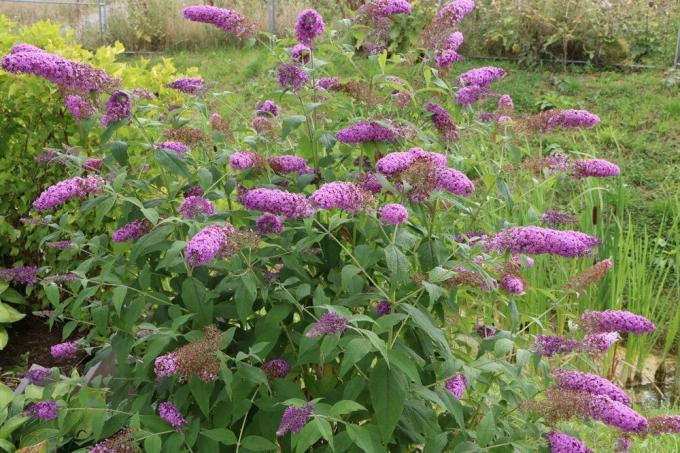
frequently asked Questions
No, there are no bee-friendly conifers - with one exception. The male specimens of the European yew (Taxus baccata) are used by honey and wild bees as well as by bumblebees to collect pollen. However, these flowers also do not contain nectar.
Roses are generally not considered to be particularly bee-friendly woody plants, because the cultivated roses, which are usually provided with double flowers, are not suitable as food plants for insects. Nevertheless, there are many good bee pastures among the roses, especially the wild and climbing roses are highly recommended for this purpose.
There are many beautiful flowering shrubs suitable for bee-friendly hedges. Privet, willow, cornel cherry, bird cherry, copper rock pear, weigela, snowball and finger bush, for example, can be used very well.



